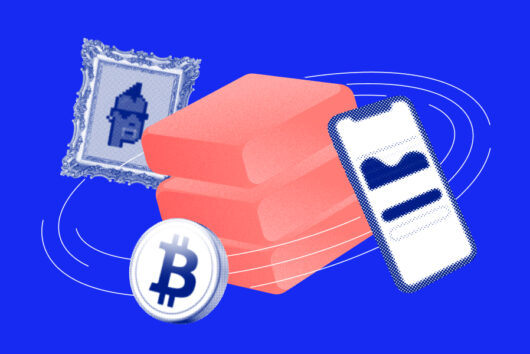Ethereum London hard fork: easy on the gas, eyes on the future

Ethereum’s London hard fork went live on Thursday 5 August with five new Ethereum Improvement Proposals (EIP), which are standards specifying potential new features or processes for Ethereum. Theoretically, the upgrade may also give ETH a store-of-value, or anti-inflationary appeal, which, up until now, has been the sole domain of Bitcoin.
Strap in as we give the London hard fork our undivided attention. This one’s a biggy.
The big five Ethereum Improvement Proposals (EIPs)
EIP-1559
EIP-1559 was by far the most anticipated and far-reaching of the upgrades – a complete refurbishing of the Ethereum (ETH) fee and payment system. The elevator pitch from Ethereum co-founder Vitalik Buterin is that EIP-1559 is “a transaction pricing mechanism that includes fixed-per-block network fee that is burned and dynamically expands/contracts block sizes to deal with transient congestion.” What does this mean?
Before the London hard fork, transaction fees were based on a bidding system in which Ethereum users would bid on a mining price when sending a transaction. It was an imperfect system, as it resulted in volatility across the network every time the network was taking strain, either due to high load or during market crashes. Under EIP-1559, the bidding system is automated and algorithmically calculated, with the set fee amount fluctuating depending on network congestion.
Previously, miners were also rewarded with ETH every time they validated a block, on top of the transaction fees paid by the users. The 1559 improvement means that miners will no longer receive income from transaction fees. Instead, these fees will be burned on the network, reducing the circulating supply of ETH over time and addressing concerns around inflation of the coin.
As crypto blogger Nigel Simon explains in How EIP-1559 changes the transaction fees of Ethereum, EIP-1559 changes how the amount you pay for each unit of gas is calculated and where that ETH goes. Remember, gas is a unit of measurement for the amount of computational power required to execute certain operations on the Ethereum blockchain.
Before London, miners were paid a single transaction fee, whereas now, the fee is split in two: There’s the base fee determined by network congestion, which will be burned; and a priority fee (a tip), decided by the user, which goes to the miner. The size of the tip will help your transaction get noticed by miners during times of congestion. It remains to be seen what the accepted tip amount will be.
EIP-1559 also introduced a max fee parameter, which is the maximum amount of ETH you’re willing to part with for each transaction – this includes the base fee and tip. Then there’s a max priority fee, which is the maximum amount of ETH tip you’re willing to pay the miner. These parameters enable users to cap the amount they are willing to pay for mining services.
For transactions that make it onto the Ethereum block, determining the fees is a three-step process:
- The base fee is deducted from the max fee, and is burned.
- If there’s ETH left after the deduction, it is used to pay a tip to the miner, up to a maximum of the max priority fee decided by the user.
- If there’s still ETH left after the tip, it is refunded to the transaction’s sender.
Greater block size variance also forms part of the 1559 improvement, and means that block sizes can now fluctuate up to double the previous size limit to account for network congestion. The aim here is to improve the fee market efficiency. As Michael McSweeney explains on the BlockCrypto, blocks being adjustable depending on the degree of network congestion means room for more transactions at a given time.
EIP-3198
Technical jargon aside, the EIP-3198 improvement adds an operational code that helps smart contracts access a block’s base fee, which will help in submitting fraud proofs and creating trustless gas price derivatives.
EIP-3529
This improvement also deals with the fees structure, in that it removes gas refunds, allowing blocks to use twice the previous gas limit.
EIP-3541
This improvement is not so much an improvement as it is an upgrade to facilitate the transition to London. Contracts conforming to the Ethereum Virtual Machine Object Format (EOF) were validated when London was deployed. To guarantee that all these EOF contracts were valid, EIP-3541 blocked unvalidated contracts from being recognised.
EIP-3554
Ethereum developers have long been planning to make the mammoth switch from a proof of work to a proof of stake consensus mechanism, motivated mainly by the ever-increasing difficulty levels of puzzles in the mining algorithm, known as the Difficulty Bomb. The bomb will eventually cause a severe lag between the production of blocks, leading to the “Ethereum Ice Age”, during which the blockchain is expected to freeze and stop producing blocks.
“Given that the proof of stake transition is not yet ready, we need to delay when the bomb will go off,” says Buterin on Ethereum.org. EIP-3554 extends the fuse until December 2021, when the network is expected to be ready for the transition.
What does the London hard fork mean for you?
Cheaper transactions
The majority of users transacting or holding ETH do so through a wallet like the Luno Ethereum wallet, which means that the complicated transactional fees and bidding happens in the background without you noticing it. However, according to Tim Beiko, a developer with the Ethereum Foundation, you can expect a 20% reduction in transaction fees in the long run.
ETH in demand
The burning of a portion of the transaction fee also means that more and more ETH will be removed from circulation, which over time will increase demand for the cryptocurrency, causing its price to rise.
Following the successful London rollout, Buterin told Bloomberg the upgrade is proof that the Ethereum ecosystem is able to make significant changes, intimating at the switch to proof-of-stake set for the end of the year or early in 2022. We’re keeping our eyes peeled.
 Discover
Discover Help Centre
Help Centre Status
Status Company
Company Careers
Careers Press
Press

